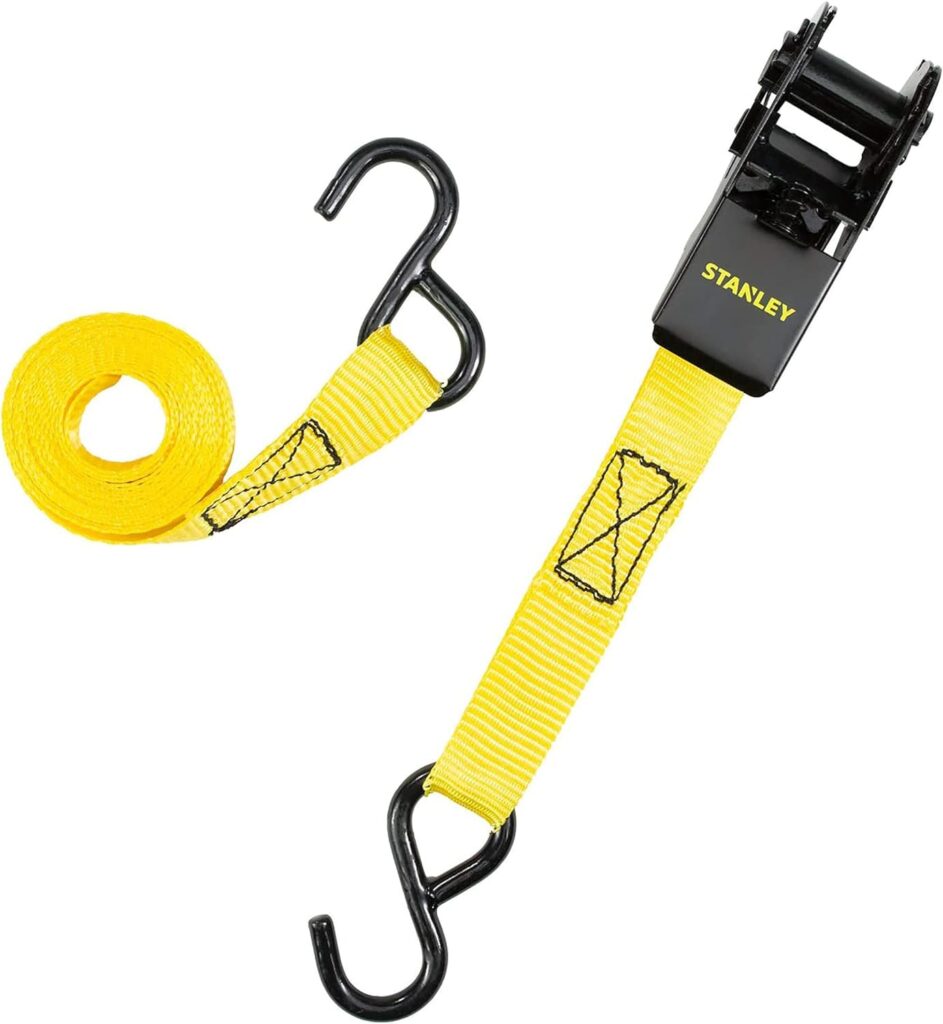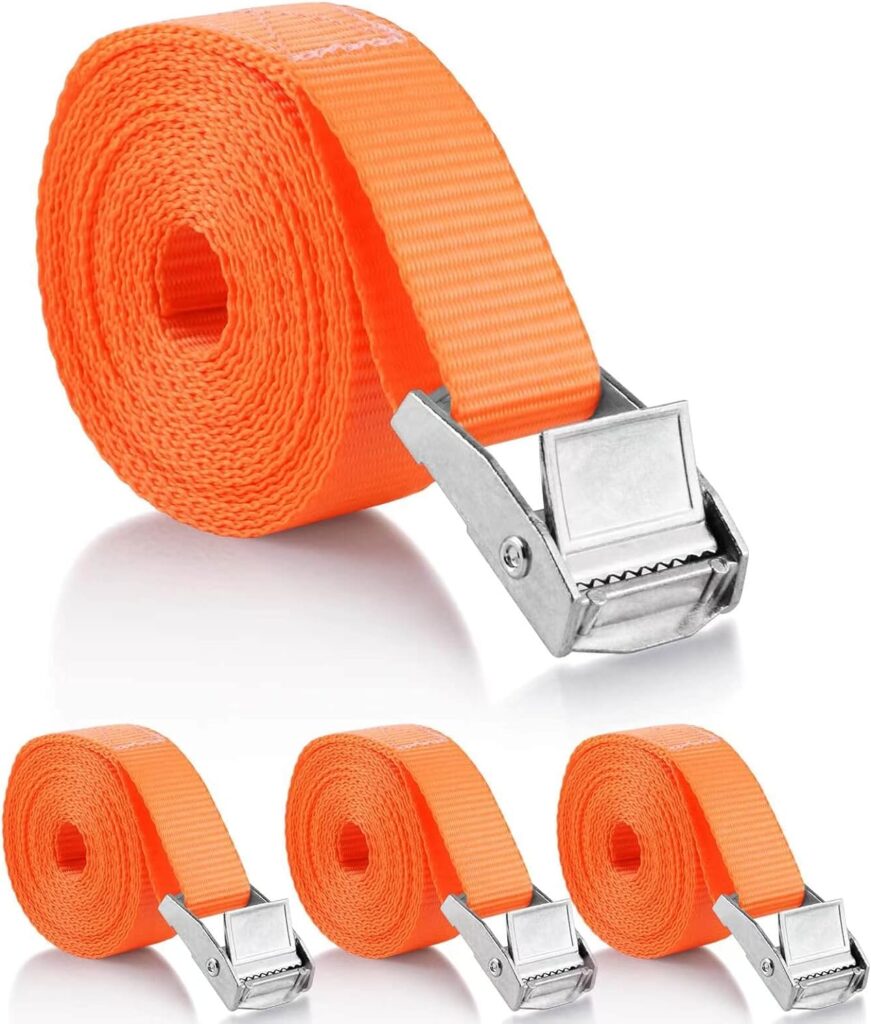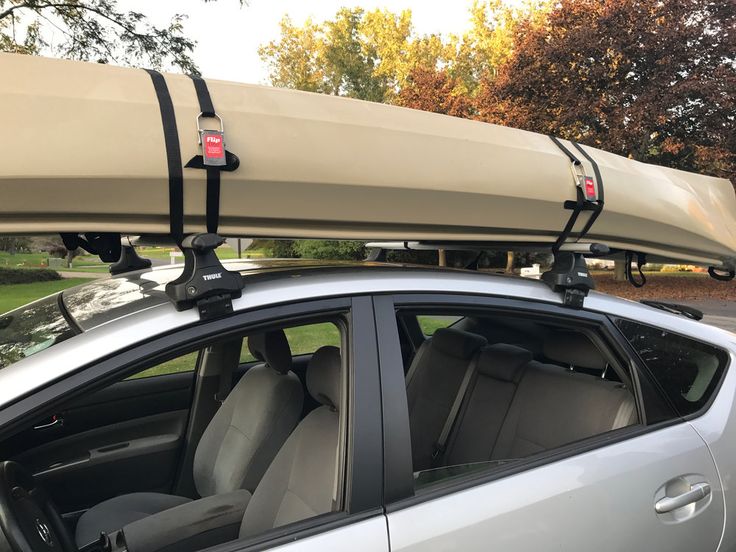Imagine this: we’ve just spent the last hour enjoying the peaceful morning sun with our trusty kayak. But now, it’s time to pack up and get our kayak back home. Sounds simple, right? It should be, as long as we secure it properly to our vehicle. How to tie down a kayak and ensure our kayak is well-fastened isn’t just a good practice, it’s essential for the safety of everyone on the road, including ours.
Key Takeaways
- Proper gear and loading technique are crucial for transporting a kayak safely.
- Strapping down a kayak requires attention to detail and proper securing points.
- Always perform a road test to ensure the kayak is securely fastened before traveling.
What Gears to Use to Tie Down Your Kayak?
When we hit the road with our kayaks, ensuring they’re secured properly is essential. Choosing the right gear for tying down a kayak is a balance of strength, durability, and protecting the kayak’s surface.
Selecting Appropriate Straps
The backbone of securing a kayak is the straps. Cam straps are our go-to because they’re easy to use and tighten without damaging the kayak. A simple thumb release on the cam buckle makes them straightforward to loosen. Generally, you want two straps for the main hull—each placed around the kayak and crossbars. Remember, ratchet straps can apply too much pressure and potentially damage your kayak, so we prefer cam straps for a safe grip that’s not too tight.


Different Types of Racks
Your car’s rack system is more than just a place to tie the kayak—it’s the foundation. A dedicated kayak rack with padded cradles can be ideal, but a general-purpose roof rack works fine too. We want sturdy crossbars that the kayak can rest on securely. If you’ve found yourself asking, “Do I really need a fancy rack?” The answer is not always. A good-quality aftermarket roof rack often does the trick just as well, if not better.
Protective Padding Options
We can’t stress enough the importance of protecting your kayak’s hull. Foam blocks or pads can be lifesavers, especially if you don’t have a padded rack system. These foam blocks sit between the boat and the crossbars, cushioning the kayak and protecting it from scratches and pressure points during transportation. Trust us, they’re a small investment that goes a long way in protecting your kayak’s integrity.
Remember folks, whether it’s a short jaunt to the local lake or a cross-country adventure, using the right gear to tie down your kayak will keep it snug and secure on your vehicle. Safe travels and tight straps!
What Protection Does the Vehicle Need?
When strapping a kayak to your vehicle, safeguarding the car is just as crucial as securing the boat. The right setups prevent scratches and dents and make sure your kayak doesn’t become a “guess what happened on the way” story.
Roof Rack Installation
First things first, if your vehicle isn’t already equipped with a roof rack, it’s time to invest in one. It’s the foundation of kayak transportation—think of it as the kayak’s parking spot on your car. Be sure to use a rack that is compatible with your vehicle’s make and model; this can usually be checked through the roof rack manufacturer’s website or through a fit guide. Some racks attach to the existing rails on your vehicle, while others may need hood loops or a tow hook as additional contact points. When installing, make sure it’s snug and secure; you don’t want it to be the weakest link on the freeway.
Attaching Foam Blocks
Now, if a roof rack isn’t in the cards, foam blocks are your next best bet. These blocks act as a cushion between your kayak and the roof of your vehicle, protecting the paint job from any scrapes or pressure points. They typically fit securely over the hull of the kayak and rest on top of the vehicle. To affix these, open your vehicle’s doors and place the blocks on the roof, spaced out to match the kayak’s width. Once the kayak is placed on top, use straps that run through the interior of the vehicle—not forgetting to protect your rear bumper from potential scuffs when loading and unloading your aquatic adventure buddy.
How to Load a Kayak On Your Vehicle?
Loading a kayak onto your vehicle doesn’t have to be a Herculean task. Whether you’re tackling it with a buddy or solo, we’ll walk you through the steps ensuring you’re ready to hit the water in no time with your kayak secure on your roof rack bars or kayak carrier.
How to Load a Kayak With Two People?
Step 1: Position yourselves on opposite sides of the kayak, each of you squatting down by the cockpit.
Step 2: As a team, lift the kayak up to waist height before hoisting it over to the vehicle’s roof rack or kayak carrier.
It’s like a well-choreographed dance that saves energy and ensures both steadiness and safety.
How to Load a Kayak By Yourself?
Going solo with your kayak? No problem.
Step 1: Place a lifting system or a kayak carrier designed for solo loading at the rear of your vehicle.
Step 2: Lift the front of the kayak onto this system, then push from the back of the kayak to slide it onto your roof rack bars.
Yes, even us solo adventurers can get out on the water with a bit of clever equipment and technique.
How to Ensure Kayak Stability?
Once your kayak is up on the roof rack or kayak carrier, ensuring it remains stable during transport is crucial.
- Straps: Use heavy-duty straps to tie down the kayak. Place one strap around the bulk of the kayak and roof rack bars on each side, and tighten until snug, but not over-tightened as this can deform your kayak.
- Bow and Stern Lines: Secure the front and rear of the kayak using lines tied to the vehicle’s bumper or tow hook – this prevents any shifting during travel.
And remember, double-check those ties; a stable kayak means a worry-free drive to your paddling destination. Happy kayaking, friends!

How to Secure the Kayak?
Ensuring your kayak is tied down properly is crucial for safe transportation. We will cover the nuts and bolts of securing your kayak with cam straps, tying down techniques, and attaching bow and stern lines.
Using Cam Straps Effectively
Cam straps are our go-to choice for securing kayaks because they’re straightforward and reliable. To use them, simply loop the strap over the kayak, pass it under the roof rack bar, and back over the kayak. Thread the strap through the cam buckle and pull tight to ensure the kayak sits snug against the rack. The beauty of cam straps lies in their simplicity; no complex knot-tying skills required.
Tie Down Techniques
When you’re securing the kayak, a mix of the right tools and technique is key. We recommend a “no wiggle” approach: the kayak should not move side-to-side or up-and-down. Start by centering your kayak on the rack. Then, take your cam straps and go over your kayak’s hull, passing them under the crossbars twice to create an X pattern. This method increases stability and keeps your kayak from shifting.
Attaching Bow and Stern Lines
For that extra security, attaching bow and stern lines is a must, especially during long drives or on the highway. Attach a hood loop strap to the front of your car if there isn’t an accessible tie-off point. Similarly, find or create a tie-off point on the rear. Secure the lines to the bow and stern of your kayak and then to these tie-off points. Make sure the tension is enough to keep the kayak from lifting but not so tight that it deforms the hull.
Safety and Precautions
When it comes to tying down a kayak, the right precautions ensure a stress-free journey to your paddling destination. Let’s make sure you and your gear arrive in one piece, and remember, a stable kayak means a smoother drive.
Checking for Secure Attachment
Before you even think about hitting the road, it’s critical to ensure your kayak is as snug as a bug on your vehicle. We follow the manufacturer’s instructions to a T, since they’ve tested what works best for their kayak rack systems. Trust us, those instructions are gold! Straps are typically the go-to, but bungee cords? Not so much. They can stretch and loosen, turning your kayak into a potential road hazard. Always give every strap a good tug – they should be tight enough to hold your kayak firm without deforming it. It’s a bit like a firm handshake; it’s all about getting the pressure just right.
Driving with a Loaded Kayak
Now, have you ever driven with a kayak up top? Some tips never change: Take it slower than usual and avoid sudden stops. But remember, it’s not just about how you drive—it’s about what you’re driving with. We always check that the kayak is secured properly because let’s face it, a flying kayak is bad news for everyone. And, if you hear any odd noises, do us all a favor and pull over to double-check everything’s still shipshape. It’s all about peace of mind, knowing your precious cargo won’t take a dive without you.
Take a Road Test
Before hitting the road, we always recommend a road test. Just like you’d test-drive a car, it’s vital for ensuring your kayak is secure. Let’s talk about what that entails.
First, fasten the kayak and double-check all straps and lines. Make sure those loose ends are tucked away or tied down. Any straps left flapping can quickly become frayed or untied.
After everything is snug, take your vehicle for a short drive. Start slowly. Pay attention to any unusual vibrating or shifting sounds that could indicate your kayak isn’t as secure as you thought. We’re listening for a silent ride – no news is good news!
Make a few quick turns and gentle stops. Did you hear any movement? If yes, it’s time to recheck your tie-downs. We’re not aiming for a thrill ride here, just making sure everything stays put.
Let’s not forget about wind strength. Even on a calm day, driving creates enough airflow to test your setup. Use this chance to see how your kayak holds up against the wind without the full force of highway speeds.
Lastly, during your actual trip, it’s smart to check every 5 minutes initially, then at least every stop thereafter. It might sound excessive, but trust us, it’s always better to be safe than sorry!
Taking these precautions might seem like a chore, but it’s all about making sure we get to our destination with our kayaks in tow, ready for adventure.
Frequently Asked Questions
When it comes to kayaking adventures, securing your gear right is as pivotal as the journey itself. Let’s tackle some FAQs that will help you get your kayak to the water safely.
Q: How can I secure a kayak to a car without a roof rack?
A: If you’re in a pinch without a roof rack, you can use foam blocks as a makeshift solution. Place these on your car roof, set the kayak firmly atop, and then run tie-down straps through your vehicle’s doors or windows to keep everything snug.
Q: What steps should I follow to safely use ratchet straps for a kayak?
A: First, lay the straps on the roof rack and place your kayak on top. Feed the ends of the straps over the kayak and under the bars of the rack, avoiding any twisting. Tuck the loose ends of the ratchet straps back through the ratchet mechanism and tighten—with caution. Over-tightening can damage your kayak.
Q: Is it necessary to tie down the bow and stern when transporting a kayak?
A: Absolutely. The bow and stern lines add crucial stability and safety, preventing the kayak from shifting during transport. Even if it seems secure, attaching bow and stern lines is a step you shouldn’t skip, particularly when traveling at higher speeds or in windy conditions.
Q: Can you explain the best method to attach two kayaks to a single roof rack?
A: Sure. Position the first kayak on its side and secure it to one half of the rack. Repeat with the second kayak on the other side, ensuring they don’t touch. Utilize strong straps and cam buckles to tighten both kayaks individually. This method distributes weight evenly and saves space.
Q: What are the differences between using a J Rack versus a Cradle for kayaking transport?
A: A J Rack holds your kayak on its side, maximizing roof space, which is perfect for hauling multiple yaks. A cradle supports your craft right-side up, offering a more natural position that some argue puts less stress on the hull. They’re both great; your choice depends on your preference and load.
Q: How should I strap down a kayak in a truck bed to ensure it’s secure?
A: Use tailgate pads or a truck rack to protect your kayak and vehicle. After positioning the kayak, run straps over the vessel and through tie-down points in the truck bed. For lengthier yaks, secure the stern with a red flag for visibility and additional straps if necessary. It’s simple: protect and secure.
Remember, we’re here to offer insights grounded in personal experience and sprinkled with a bit of that kayak wisdom you’ve come to appreciate. Stay safe and paddle on!


7 thoughts on “How to Tie Down a Kayak? [Best Tips for Safe Travel]”